After everyone understands the design requirements of the clean room, there is another link, which is the ventilation device of the laboratory. Some polluting gases must be removed to make the clean room achieve the required degree of cleanliness.
- The pros and cons of a drug are not only directly reflected in the efficacy and safety, but also in the stability, consistency and practicality of the drug.
- In order to ensure the quality of medicines, in addition to complying with relevant legal standards such as pharmacopoeia, it is very important to carry out production in a clean environment.
- Although air-conditioning purification equipment is an important aspect of implementing GMP, it must be noted that it is only the improvement and supplement of production equipment and production management. It is not enough to only rely on air-conditioning purification system to prevent microbial contamination or cross-contamination. Air conditioning purification equipment may not fully meet the requirements of GMP. It must be noted that when the equipment conditions reach a certain level, it must be realized through management.
- Harmful or non-hazardous foreign matter in the air of the production area should be minimized, and sufficient air can be supplied by the air-conditioning system to remove airborne dust that may contaminate the product.
- The air-conditioning system should consider preventing fresh air dirt and return air dust from entering the work area, supplying enough air volume to remove airborne foreign objects in the work area, and independently manage the incoming air to adapt to the required temperature and humidity. Purify the intake air with a high-efficiency filter to prevent bacteria and fine dust from entering.
- In order to ensure the quality of medicines and establish a complete quality assurance system, in 1982, China Pharmaceutical Company promulgated the “Drug Production Management Regulations”. After several revisions in the implementation process, it was revised again in 1992, and was promulgated and implemented by the State Drug Administration in June 1999. Its basic spirit and content are roughly the same as those of foreign GMP.
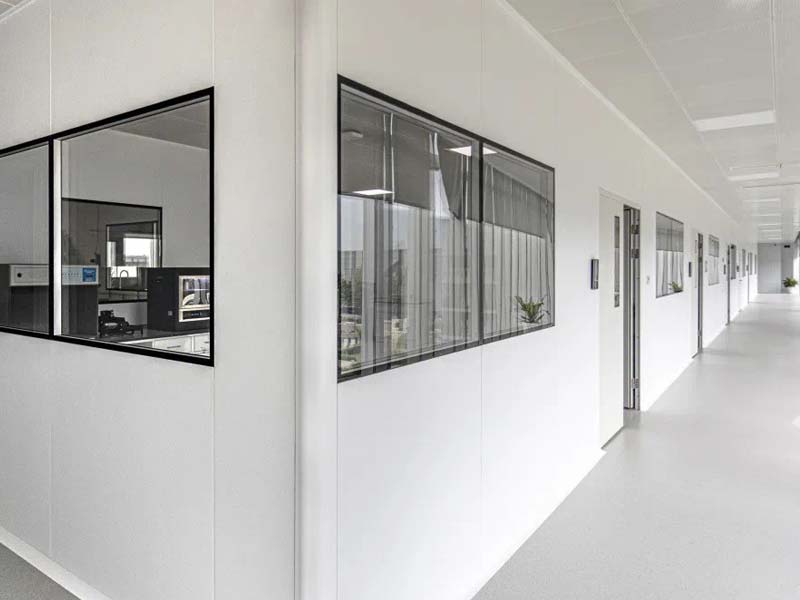
- The “Good Manufacturing Practice for Pharmaceutical Production” clearly stipulates that any new, rebuilt, or expanded pharmaceutical factory or production workshop must be designed, constructed and produced in accordance with GMP requirements. And the municipal health administrative department will only issue a “pharmaceutical production enterprise license” after it has passed the acceptance inspection. The original production plant should also be combined with the production technology transformation of the enterprise, so that it may meet the GMP requirements.
- In the non-sterile preparation process, the temperature and humidity are determined according to the hygroscopicity of the product, the operator’s clothing and the heat load of the equipment and the economic effect, generally 22-28 ℃ in summer, 50%-60% RH, and 18-20℃ in winter (40%-55%RH is required for sub-packaging).
- “Pharmaceutical production management standards” requires: the clean area is generally controlled at a temperature of 22-24°C and a relative humidity of 45%-60%. The production and distribution of sterile drugs with strong hygroscopicity use a local low-temperature workbench. The control area is generally controlled at a temperature of 18-28°C and a relative humidity of 50%-65%. When determining the relative humidity of the room, it should be considered that too high relative humidity will not only make the product absorb moisture, but also easily grow mold. If the relative humidity is too low, it is easy to generate static electricity in the clean room (this is not allowed for explosion-proof workshops), and make indoor operators feel uncomfortable.
- The lower the relative humidity in summer, the greater the energy consumption. According to calculations, the number of air changes in the clean room is 20 times/h and the room humidity is 25°C. When the indoor relative humidity is increased from 55% to 60%, the cooling load can be saved by about 15%.
- When determining the clean room temperature and humidity, it is necessary to pay attention not only to meet the process requirements, but also to save the energy consumption of the air conditioner to the greatest extent.
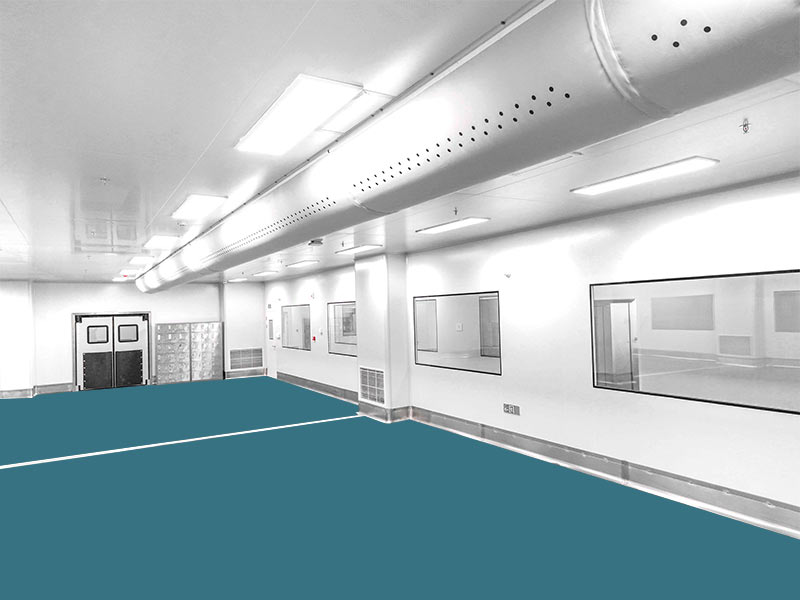
- The manufacturing process of sterile preparations consists of a clean area from 10,000 to 100. The filling and sealing process of injections requiring 100-level cleanliness is generally a laminar flow clean hood or a once-fluid cleaning period in a 10,000-level operating room.
- Chinese “Pharmaceutical Production Management Standard” recommends that the number of air changes required under normal circumstances is ≥25/h for a cleanliness class of 10,000, ≥15/h for a cleanliness class of 100,000, and points out that the determination of the number of air changes should be verified according to the heat balance calculation.
- For a class 100 clean room with vertical laminar flow, the cross-sectional wind speed in the room is ≥0.25m/s, and for a class 100 clean room with horizontal laminar flow, the cross-sectional wind speed in the room is ≥0.35m/s. In general, as far as possible in the 10,000-level or 100,000-level environment, the local laminar flow method is used to achieve the 100-level requirements.
- The determination of the number of air changes required for the clean room of the pharmaceutical factory is very flexible. It is closely related to the equipment layout, personnel density, and the advanced level of the process equipment. For the room where ordinary ampoule filling and sealing machines are arranged, a higher level is required. The number of air changes, for the water needle production room equipped with a washing, filling and sealing linkage with an air purification device, only a lower number of air changes can maintain the same cleanliness.
- In order to make the outdoor polluted air accidentally enter the clean room, the clean room must maintain a certain positive pressure. According to Chinese “Clean Plant Design Regulations”, the pressure difference between the clean room and the adjacent room should not be less than 4.9Pa, and the pressure difference between the clean room and the outdoor should not be less than 9.8Pa.
- In the working area of sterile preparations, changing rooms and clean corridors, as well as sterile operating rooms with different biological cleanliness levels, are arranged in order of sterility level.
- The rooms connected to each other should have a pressure difference of more than 4.9Pa in order according to the cleanliness level. The pressure difference is too small to prevent gap penetration during strong winds or pressure difference changes when opening and closing the door. If the pressure difference is too large, it is often difficult to open the door, and the ideal way is to use an airlock chamber while maintaining a reasonable pressure difference.
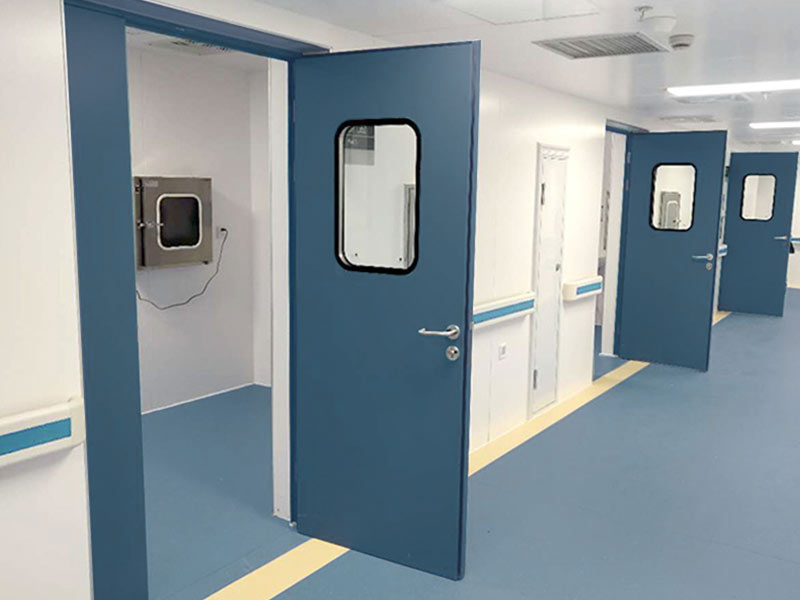
- It is harmful to clean rooms that generate dust, toxic gas, flammable and explosive gas in production, such as tablet workshop, penicillin workshop, antitumor drug workshop, tablet coating room using solvent, and the fine drying and packaging process of raw materials. In order to avoid the escape of harmful substances, relative negative pressure should be maintained with the adjacent clean room.
- The cooling scheme should be based on the cooling requirements (cooling consumption, cooling power type, cold water temperature, etc.), the water source conditions (water temperature, water quality, water volume, etc.) in the project construction area, as well as the power supply and heat source preparation. Analysis of various factors to determine, that requires better economic indicators, but also consider local possibilities.
- The process of heat and humidity treatment includes heating, cooling, humidification and dehumidification.
- The medium of heat and moisture exchange is water, steam, liquid hygroscopic agent and refrigerant.
- Equipment for heat and moisture exchange can be divided into direct contact type and surface type, of which direct contact type includes water spray chamber and steam humidifier. Surface types include air heaters, water-cooled surface coolers, and direct evaporative surface coolers.
- The characteristics of direct contact heat and moisture exchange equipment are that the medium for heat and moisture exchange with air is directly in contact with the air to be treated, usually by spraying it into the air to be treated.
- The surface is wet and hot. The characteristic of the moisture exchange equipment is that the heat is carried out with the air, the medium of the moisture exchange does not directly contact the air with the heat, and the moisture exchange is carried out through the metal surface of the processing equipment.
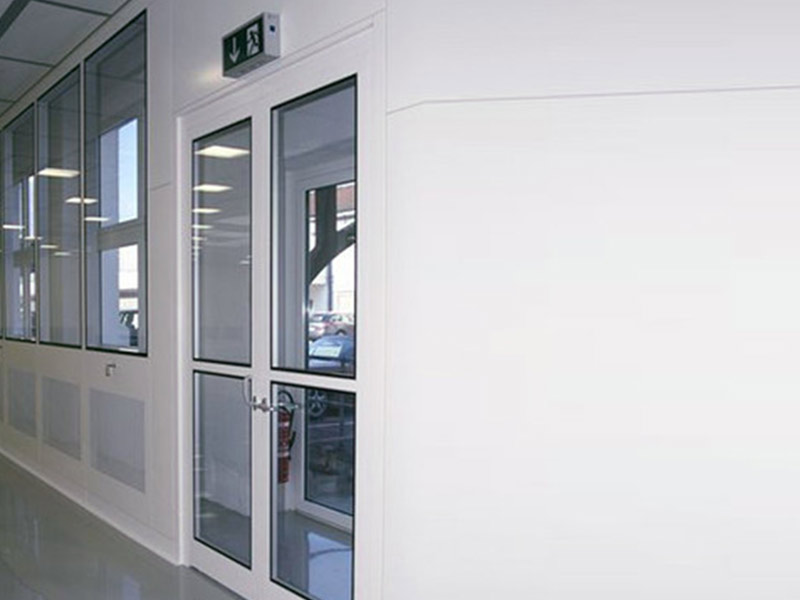
- Ordinary air supply methods can be divided into two types: centralized and local.
- In the concentration room, according to the different medium that takes away the indoor heat load, it can be divided into three types: all-air type, air-water type and all-water type. For air crystallization technology, only all-air type can be used.
- The purification system needs primary, medium and high-efficiency filters. Combined with the dual requirements of air conditioning and purification, the purification air conditioning system can be divided into centralized purification air conditioning system and decentralized purification air conditioning system.
- The local purification method is suitable for places where the production batch is small or the original workshop is used for technical transformation.
- At present, the most widely used purification treatment method is the combination of whole-room purification and local purification. This is the purification method produced in the development of clean technology. It can not only ensure a certain degree of cleanliness in the room, but also achieve high cleaniness environment in local areas, so as to achieve the dual purpose of not only meeting the production requirements for high clean environment, but also saving energy.
- One of the earliest methods developed in the whole clean room cleaning technology, and it is still used today.
- Whole-room purification is suitable for places with large process equipment and a large number of places that require the same indoor cleanliness, but this method requires large investment, complicated operation and management, and long construction period.
- The typical combination of clean tunnel type whole-room purification and partial purification is the purification method currently adopted, also known as the third-generation purification method.
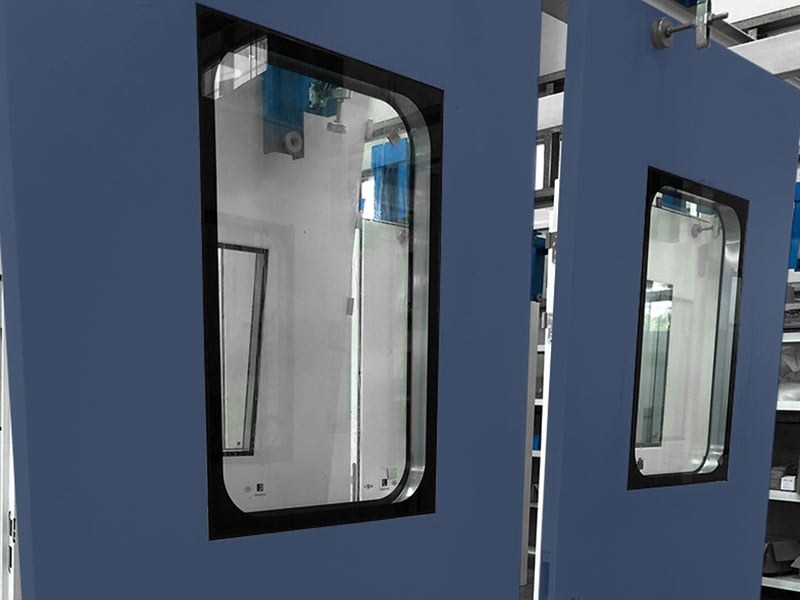
- The clean pipeline requires that the process production must be automated, and the high-efficiency filter must be based on 0.1um dust particles to achieve ultra-high cleanliness.
- Since the clean pipe is the air in the pipe to be cleaned, the amount of air sent and returned is very small, which can greatly save energy. It is the development direction of clean technology, also known as the fourth-generation purification method.
- The airflow organization of the clean room is an important link in the design of the purification air conditioner, which is not only related to the temperature, humidity and airflow speed of the indoor working area, but also related to the air cleanliness.
- The formation of good airflow organization can achieve higher air cleanliness under the condition of smaller system circulation air volume.
- In the engineering design, in addition to considering the purification method, the formation of the purification air-conditioning system and its corresponding design scheme, system division principles and design points, special attention should be paid to the airflow organization of the clean room.
- The distribution of air in the room is related to many factors, among which the main factors are the form, number, location and air velocity of the air supply and return air outlets.
- The airflow organization of the clean room is different from that of the general air conditioner.
- In order to improve the temperature and humidity diffusion effect and reduce the circulating air volume, the general air-conditioned room usually adopts a form of airflow organization with high affinity, which causes secondary induced airflow, some upward airflow and a certain eddy current in the room, while the function of the clean air flow organization is to limit and reduce the pollution of dust particles to the work, so this kind of airflow organization with high affinity is very unfavorable for the clean room.
- China’s “Code for Design of Clean Plants” stipulates that the vertical laminar flow clean room air flow speed through the indoor section is not less than 0.25m/s, and the US federal standard stipulates that it is 0.45m/s, the error is 20%, under the conditions of the same section area , the air volume of the latter is 1.8 times that of the former.
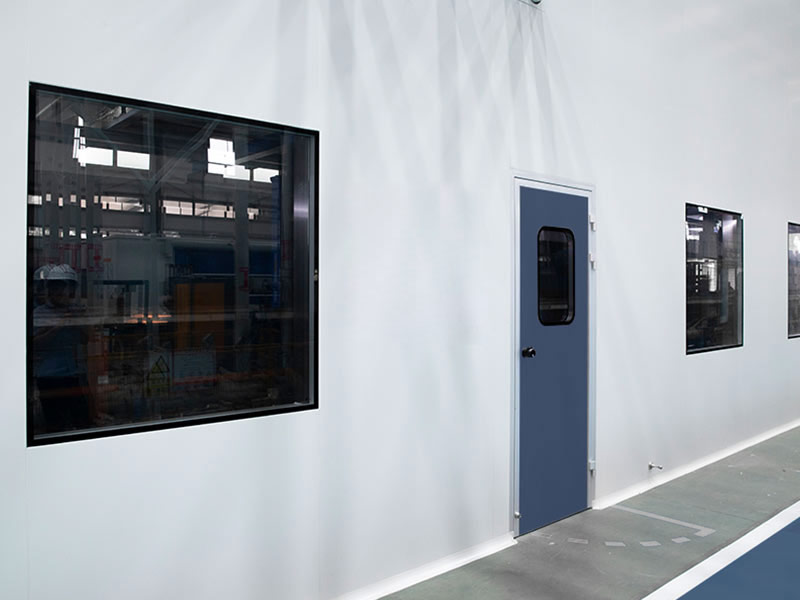
- The length of the self-cleaning time is related to the cross-sectional velocity of the supply air flow. The larger the flow rate, the shorter the self-cleaning time, and vice versa.
- The laminar flow clean room can be divided into vertical laminar flow clean room, double horizontal laminar flow clean room, and horizontal laminar flow clean room on both sides according to the purified air.
- Vertical laminar flow clean rooms mainly have the following types: ceiling damping layer vertical clean room, ceiling and side double cloth high-efficiency filtration vertical laminar flow clean room, full-orifice top vertical laminar flow clean room, dense streamline diffuser top delivery vertical laminar flow clean room, full ceiling supply vertical laminar flow clean room with return air at the lower part of both sides of the wall, vertical laminar flow clean room with centralized filter box, double-layer flow clean room.
- The airflow organization of the turbulent clean room has the following types: full orifice top feeding, partial orifice top feeding, streamlined multi-directional pollution, control of co-directional pollution, control of reverse pollution, and to meet the appropriate self-cleaning time.
- In the vertical laminar flow clean room, the role of airflow velocity mainly includes the following aspects: controlling multi-directional pollution, controlling co-direction pollution, controlling reverse pollution, and satisfying appropriate self-cleaning time.
- One of the reasons for the high cost of a typical vertical laminar flow cleanroom is the use of a grid floor.
- The vertical laminar flow clean room with the lower return air on both sides of the full ceiling air supply can save the expensive grille floor and lower mezzanine. It not only reduces the floor height and cost, but also solves the problems of vibration, small parts falling into the grille floor and visual discomfort caused by the grille floor.
- The vertical laminar flow clean room in the form of full ceiling air supply can use the ceiling full of high-efficiency filters, ceiling damping full orifice plates, etc.
- When the air is returned from one side, the width of the vertical laminar flow clean room should not exceed 3m, and when the air is returned from both sides, the width of the room should not exceed 6m. This can ensure that the vortex area is controlled below the starting height of the working area 0.8m.
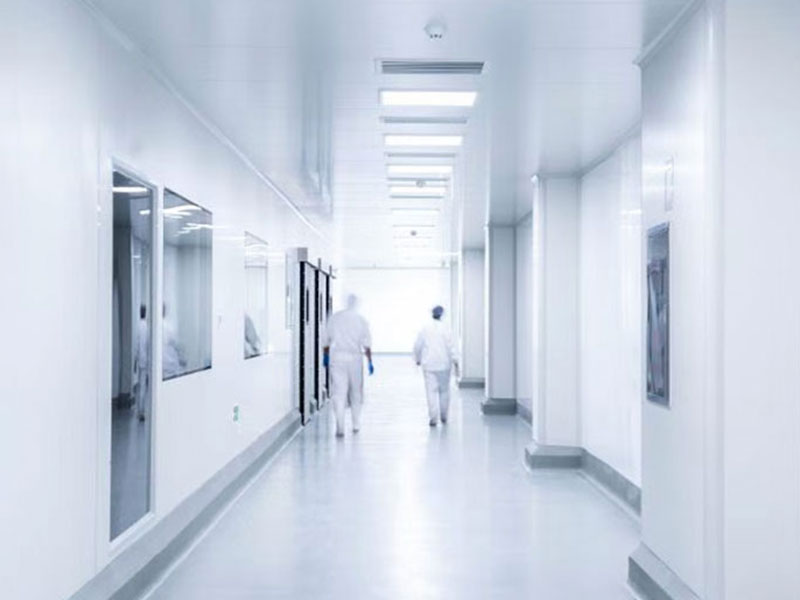
- The resistance of the return air outlet of the vertical laminar flow clean room has a very significant influence on the disorder of the streamline.
- The airflow direction of the horizontal laminar flow clean room is inconsistent with the gravity sedimentation direction of the dust particles. Therefore, the cross-sectional wind speed of the horizontal laminar flow clean room should be greater than the cross-sectional wind speed of the vertical laminar flow clean room, generally not less than 0.35m/s, otherwise the sedimentation of dust particles will occur.
- The cleanliness of the horizontal laminar flow clean room gradually decreases along the airflow direction. It is generally considered that the working area with a height of 0.8-1.5m from the ground is the working zone with the highest cleanliness, that is, the first working area. It is 10,000 near the return air wall.
- The horizontal laminar flow clean room requires that the damage to the horizontal laminar flow should be minimized when arranging equipment, and the equipment that needs to be exhausted should be arranged near the air return wall.
- In the horizontal laminar flow clean room, under the condition of ensuring laminar flow in the working area, the method of using local high-efficiency filters in the air supply wall and local medium-efficiency filters in the return air wall can reduce the number of filters, but the arrangement area of high-efficiency filters shall not be less than 40% of the area of the air supply wall, and the layout area of the medium-efficiency filter shall not be less than 30% of the area of the return air wall.
- The high-efficiency filter of the horizontal laminar flow clean room is directly installed in the air supply static pressure box, which is much easier to install on the top than the horizontal laminar flow clean room, and the replacement is also convenient.
- The circulating fan of the horizontal laminar flow clean room can be arranged at the top or bottom of the clean room, or on one side of the clean room when the building floor height is low.
- After the airflow of the horizontal laminar flow clean room is sent out from the air supply wall, it has to pass through each working face. The amount of dust generated on the windward side will inevitably affect the dust concentration of the air on the leeward side, so personal purification must be strengthened.
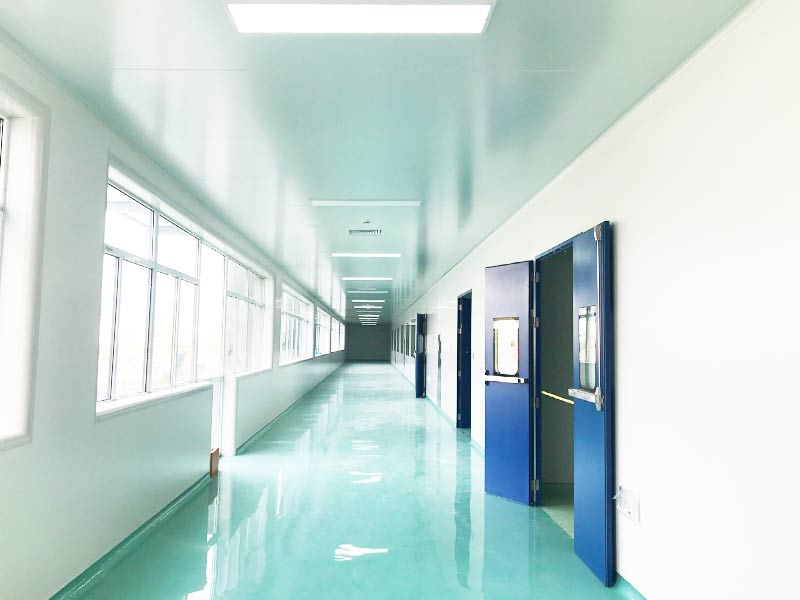
- It is generally believed that the horizontal laminar flow clean room should be equipped with personal purification devices such as a shower room.
- The cost of the horizontal laminar flow clean room is lower than that of the vertical laminar flow clean room, and the arrangement and installation of lamps are convenient.
- The uneven distribution mentioned by the uneven distribution theory still assumes that the dust generation is uniform and stable, but the distribution of dust particles is uneven. In the laboratory ventilation system, the removal of gas and the distribution of dust particles all require precise measurement and calculation, since every point is crucial.










